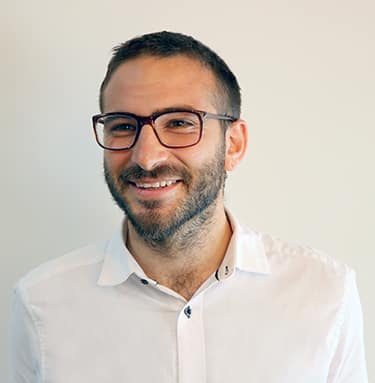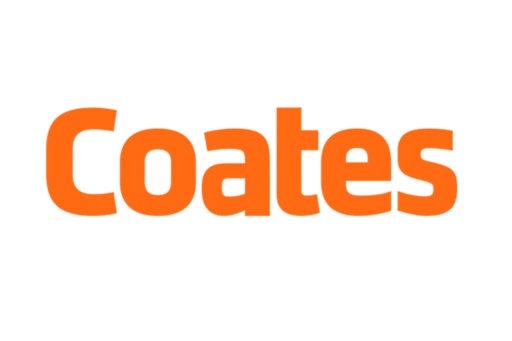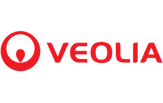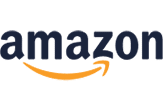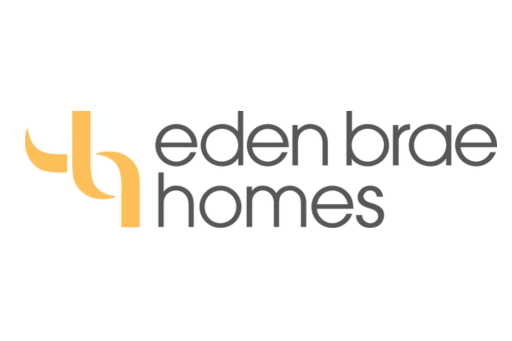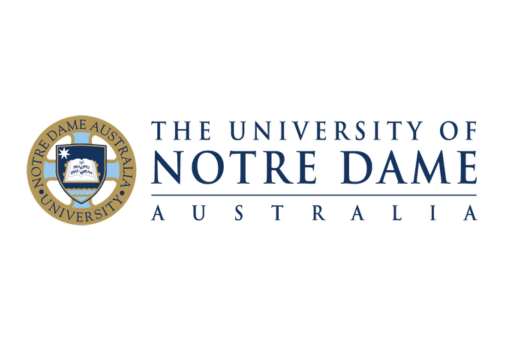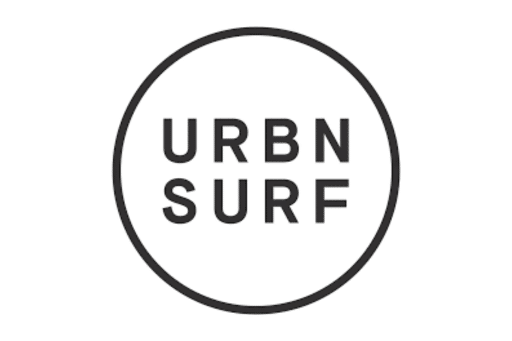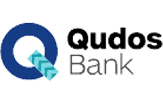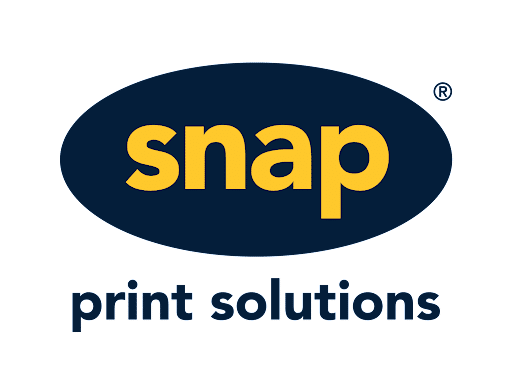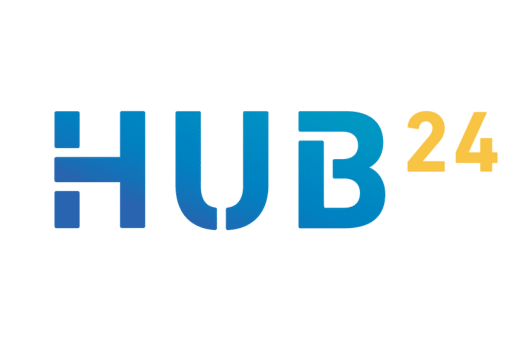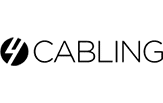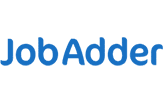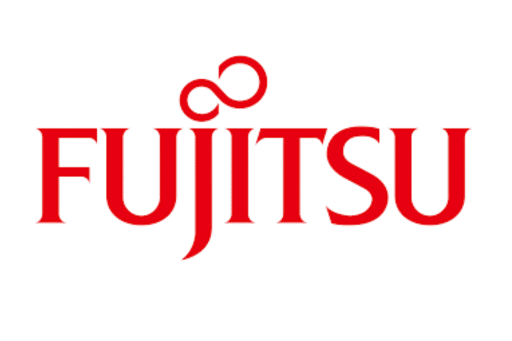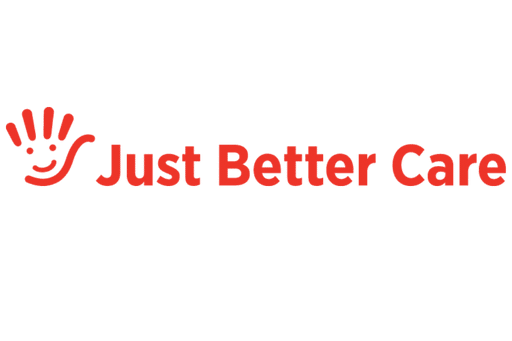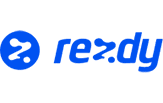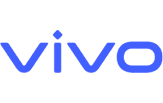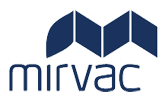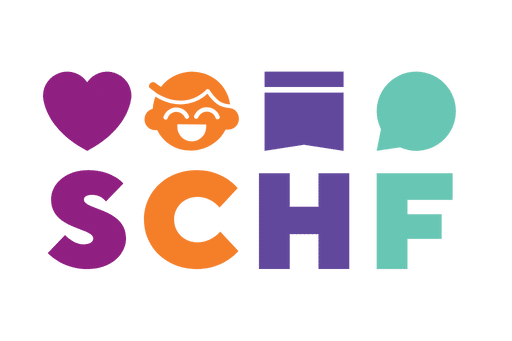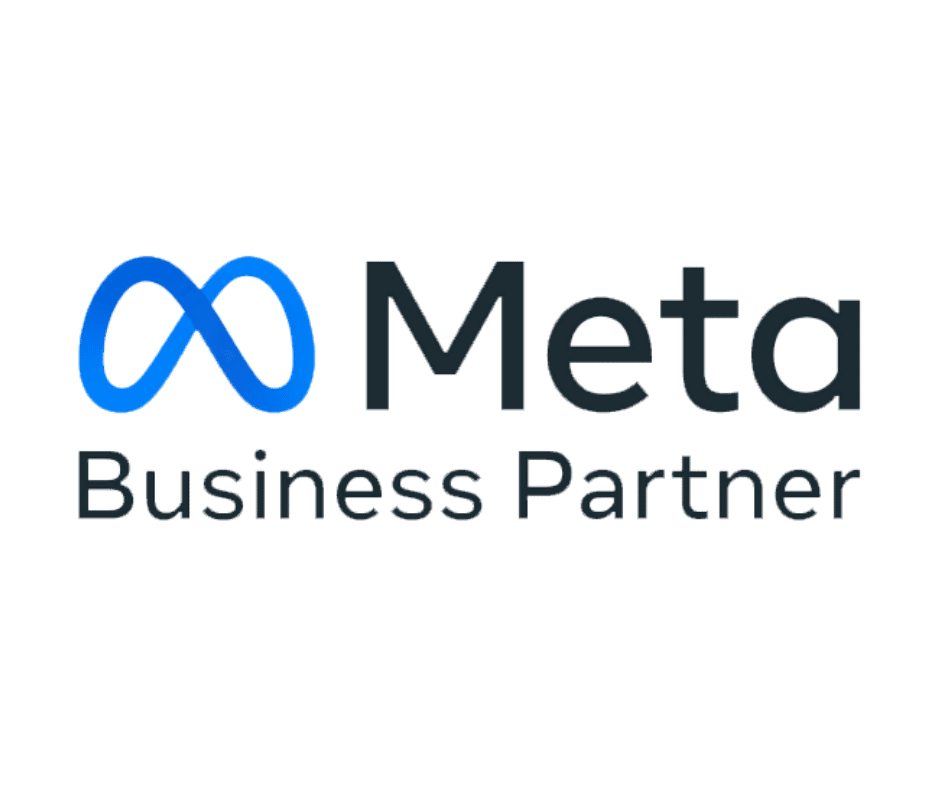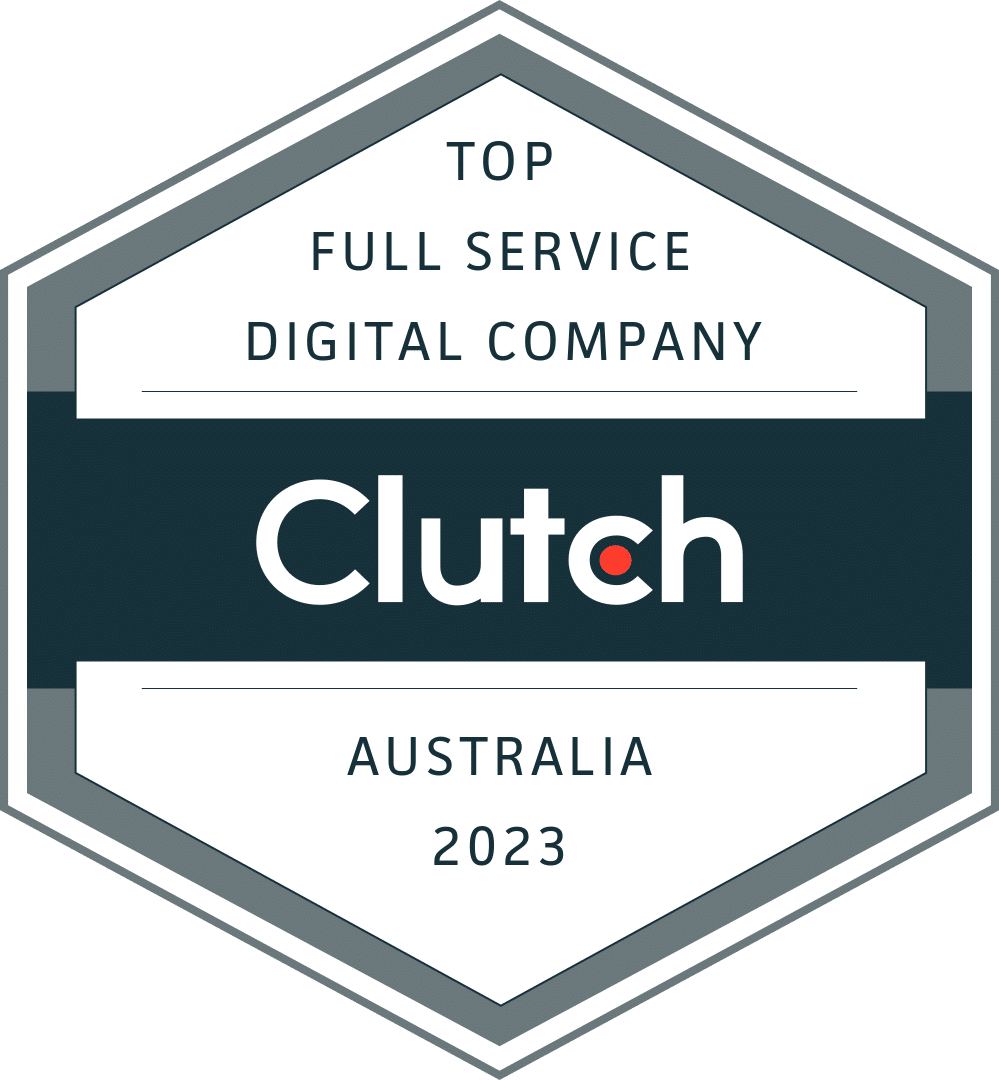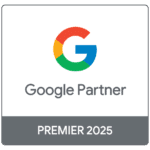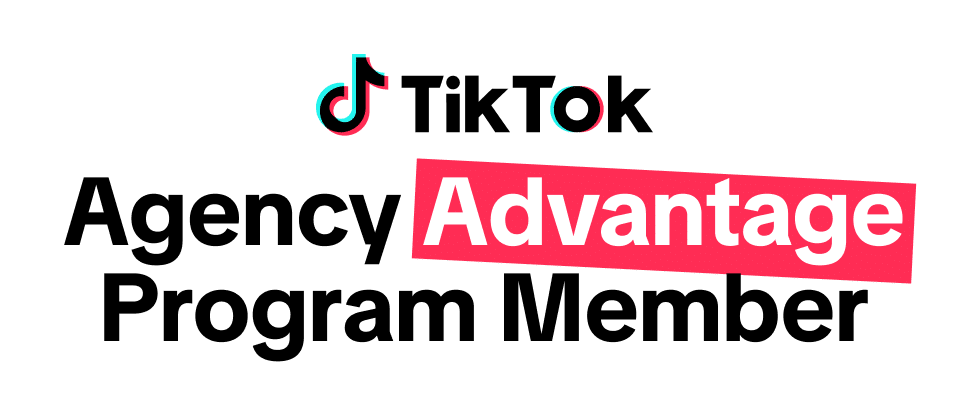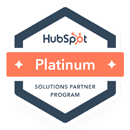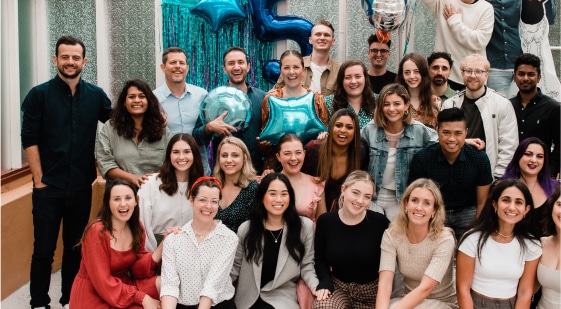Answering Your Marketing Questions for 2025
Episode Description:
Rocket Agency’s top experts and Host James Lawrence discuss what will work in digital marketing in 2025 and how to set yourself up for success with the latest on SEO, digital and creative.
Key Takeaways:
- How to navigate AI Overviews and the impact on paid search and SEO
- Will ChatGPT replace search engines?
- How to adapt SEO practices to align with AI-driven algorithms in 2025
- How digital marketing roles will remain relevant as we enter the age of AI
- How to improve the impact of digital ad creative
- The relevance of low-fidelity video content in B2B and its potential in 2025
- Interesting strategies that delivered exceptional results in 2024, and how to advocate for them
- How to balance investment between brand-building and performance activities
- How to maintain creativity across campaigns when constrained by budgets and deadlines
- How often should ad creative be updated to optimise conversions?
- The most impactful SEO initiative to prioritise in 2025
- How to structure and optimise content for SGE’s conversational search approach
- How Google Ads will evolve in 2025 and whether TikTok is a viable platform for B2B
- Changes to expect on Meta platforms this year
Featuring:
About the Guests:
Joe Alder is an award-winning SEO expert and has driven organic growth for global brands like Amazon, Coca-Cola, ANZ and Dulux through innovative strategies and data-driven insights. With over 20 industry award nominations, Joe is recognised as a leader in the field. You can follow Joe on LinkedIn.
Samantha Dodson heads Rocket Agency's creative wing and brings a wealth of experience, having excelled in both B2B and B2C landscapes for brands including LinkedIn, Adobe, Microsoft and Salesforce, as well as Telstra, WWF, Coca-Cola and KFC. Previously she was the creative lead at BlueMelon and has worked at Ogilvy and DDB. You can follow Sam on LinkedIn.
Mariano Di Lascio leads a team of outstanding marketers at Rocket Agency across paid search and paid social channels. Together with the team, he has won some outstanding awards for client campaigns, including Best Integrated Campaign at APAC Search Awards, Best Integration of Search into Cross-Channel Marketing at Search Engine Land Awards and Best Integrated Campaign at Semrush Awards. You can follow Mariano on LinkedIn.
Transcript
James Lawrence: Welcome back to the Smarter Marketer Podcast. Today's episode is a slightly unusual format. For the first time ever, I am joined by three guests, and the three guests are some of rocket's leading minds. So I have our head of SEO Joe Alder. I have our creative director, Sam Dodson, and I have our head of Digital Mariano Di Lascio.
And the purpose of today's episode is to answer. The top questions that we've had come through from Rocket clients, webinar attendees, as well as SmarterMarketer podcast listeners over the past few months. And these are the questions that we've asked for, which are the biggest questions you have coming into 2025.
And. What I felt was, was that to be able to answer in as much depth as possible, I wanted to get Joe, Mariano and Sam, given their kind of absolute knowledge and subject matter expertise, , we're in the best position possible to answer these questions in as much depth as possible. So I'm really, really, really looking forward to today's session.
And before we jump in and answer these questions. The questions I thought I'd like to get each guest to quickly introduce themselves. And I thought it might be fun for the listeners to get to know each of each of you a little bit better. If you could say one little story about yourself or something that , each of us might not know before starting this podcast..
So, Joe, I'm going to go to you first, Joe is our head of SEO. So Joe, uh, tell us something about yourself that we might not know.
Joe Alder: Okay. But you might not know when I was, uh, 12 years old, I got rescued by a lifeboat because I was floating out at sea on a polystyrene raft that I found on the ocean and it was front page news in the UK.
So yeah, I didn't know that.
James Lawrence: I didn't know that. And I'm going to Google that afterwards and see. Now, now Sam Dodson, our head of creative. So she runs the creative agency within Rocket. So, Sam, one thing that we don't know about you.
Sam Dodson: Um, one thing, I slept in the Amazon jungle in a hammock for three nights, um, just with me and two Amazonian guides, and it was probably the scariest moment of my life, but also very, um, fun and very, uh, a really amazing experience.
James Lawrence: Kind of like speed dating with you guys, I've known both of you for a long time and I didn't know either of these things. Mariano, you're icebreaker, head of digital etiquette and head of paid media. One thing about you Mariano?
Mariano Di Lascio: I'm going to keep it related to paid media then. My favourite social media platform is X, formerly Twitter, which is not very common in Australia, I love it.
Everything about it, the interactions, you know, the humor, the sarcasm, everything. So yeah, something that not even my team may know.
Sam Dodson: Controversial, very controversial.
James Lawrence: We're going to, we're going to avoid politics . So, um,
we've kind of gone through, and there was quite a lot of overlap in some of the questions. Um, one area, which I guess is an obvious one, which had the most interest was kind of all around AI. And I guess looking at it from two, two viewpoints, one was kind of the impact that it's having on the way that people will search and try to find answers to information.
And then was one about more, I guess, as marketers, Um, what threat is it to what we do? And how does it work? Um, then we had some kind of a pretty broad range of questions, and we definitely did not take out the hardest ones.
There was some, some really curvy ones, which we definitely kept things. We love good questions.
Um, but I think that the 1 where I wanted to start was around, um. So I'm going to go to you first on this one, Joe.
So thoughts around navigating Google's AI overviews and what will happen with paid search and SEO as a result, declining clicks required for end users, et cetera. Um, and then the next one there was, um, with AI increasingly influencing search algorithms. Should we look to adjust our SEO practices? So maybe Joe, just talk first of all about what AI overviews are and what kind of impact they're having on the way that the experience people having within Google in Australia.
Joe Alder: Yeah. So AI overviews, you've all probably seen it by now. It's when normally you ask a question in Google, normally a longer tail question or query, and then it actually generates the answer for you. These answers are generated from. Mostly from the top results in Google, which I'll get into in a second.
There's anywhere from a 30 to a hundred percent correlation on the first page of Google and what's included in the AI overviews in Australia. They're still rolling out. So about 6 percent of all terms in Australia have an AI overview of some form. . So from that, I guess, like what is the actual impact?
So when I've been looking at it. At the moment, 80 percent of these appear on informational queries. So people actually asking a question versus looking for a service or looking for a product. So where we've seen the impact of this is mostly on blog content. So across our clients, we've seen about 20 percent drop in specifically blog content.
Not for all clients. Some industries have been hit a lot harder. So I have a client in the health space. They have seen a 40 percent reduction in some of their biggest blog content. Pages, they're still getting that traffic, but it's just not actually clicking through. Um, so yeah, that's currently where it's at at the moment and to optimize for it.
As I said before, there's a high correlation between what ranks well in Google and what appears in these AI overviews. I mean, there's a few key takeaways that you can take though. One is making sure the language is very easy to understand by anyone. And then there's a couple of key takeaways that you can take.
And it's not technical or specific to the product you offer. It should be very much about offering information to anyone that needs it. The other is including FAQs and making sure that you answer questions and queries that people searching for that are going to have, and then just making sure structured data and all of your elements on the page, uh, marks up correctly.
So Google can easily pull that through.
James Lawrence: With that six percent figure, because I know you've been doing your own research on what impact in Australia, because it is newer than in the States, do you know what that, like, is the number higher in America yet?
Joe Alder: Yeah, it's about eight percent in the US where it's fully rolled out.
I have seen some studies where it's like 30 percent, um, but it very much depends on the database and the query that you're looking at.
James Lawrence: It's still seeing it more in informational type areas rather than very commercial areas, e. g. Best Plumber Sydney. So more in terms of things that were less commercial to start with.
Joe Alder: Yeah, more like how to fix a leak using that example. But yeah, 80 percent are informational queries. It's a huge amount. Um, and, and the other ones are more really like statements versus what is this product like actually searching for e commerce, etc.
James Lawrence: Yeah, I guess one for you, Mariano, kind of segwaying into that, um, what will happen with paid search and SEO as a result, declining clicks required for end users, et cetera.
Mariano Di Lascio: Yeah, I think it's so, it's all very, uh, new, early days. We, we know we don't want to state something that we are not confident about. Uh, I think that what I know is that things will continue to evolve towards conversational type of search experiences, zero click. type of search results. So definitely one of the things and what I like about the question is, you know, how do we navigate it instead, instead of what's going to happen?
Because no one knows, I remember, you know, when I started, you know, 15 years ago with paid media, social media was a new thing now on social media is now, you know, pretty much, um, a core channel for Pretty much every single business. So the main thing is things will continue to evolve and the way people search will continue to evolve and in terms of how to navigate it possibly is gonna end up reducing the number of clicks that you know websites get from Google.
And I think the shift is going to be towards visibility. So you may still be visible and Google may help your business stand out and connect with your audience. But I don't know how many clicks are you going to get back from those, um, visible spots. So, In terms of how to navigate it, I think we need to rely on how our tools adapt.
You know, we are using tools such as Google, Bing, Meta, TikTok, etc. All the players will be adapting to the changes. And we need to, I think the more practical takeaway is stay up to date. On what they are launching, how they are responding because we are using their tools and I don't think we should be doing their work in terms of adapting.
I think it's really being attentive. But also, I think differentiating yourself, like doing the work of imaging someone really smart like Chachipiti is helping your users, you know, buy from you. So it's like, it's time to, you know, I've been using a say that is like, you are who Google says you are, right?
And now it's like, What, which information are you going to make available for chat GPT to help your users understand if you can actually help them. So I think that's kind of a practical takeaway that we should all consider in times of change.
James Lawrence: Yeah, and I think it's, um, at the end of the day, it is about being found, right?
And, um, Google people, whether and we will get onto it shortly, whether people are turning to Google or turning to chat your BT to find the solution to problems and services that they need. Um, and then these businesses look at how to monetize it, and Google has made 80 to 85 percent of its revenue over the last 20 years from search, and it will work out ways to continue to monetize eyeballs, right?
Um, yeah, that's a good answer to that question. I'm just going to jump quickly to, um, what are your thoughts around Microsoft's investment in ChatGBT? And what that means for how people utilize search engines in the future, what will, will people still Google will being increased usage or will chat chip ET become the new search engine?
Um, I've just got a few thoughts on that. I mean, I'll probably throw to you there, Joe. There's a really, um, ran Fishkin who, um, set up Moz many years ago in America. He's now got a tool called Spark Toro. Um, I had him on the pod about six months ago. He's pumping out a lot of really good research into this space at the moment.
And I think this for me is an area where a lot of marketers are really worried about AI. And I, and I think feeling that things are changing really, really quickly. And. I think I'd urge a little bit of caution on that. So he pub, he published data based on October, 2024 in America, in terms of, um, where people are running their searches in North America.
And the numbers are really interesting. So Google was 83 percent of searches. YouTube was seven to 90 percent of searches were being done within the Google ecosystem. Bing was at 2%, which actually means that Bing has lost market share in the last two years. So even though Beanies connected in with Chachabit.
It has a huge stake within that business. It's actually lost market share and Chachabit is at 4. 3%. Um, so it's, if you're actually looking at how do I put a strategy together for 2025 in Australia? How do I, how do I make sure that people are finding me when they search for something? They're not yet turning to chat chip ET in, in droves to find the answers to commercial questions.
So I think my view on that will be that may change. It might not change. There's a lot of talk around voice search and how we interact with, um, chat bots and is chat chip ET better than Google's Gemini that may or may not be the case, right? Um, but as it stands at the moment, that the pattern of usage.
From consumers hasn't actually changed very much in the last two years. I mean, Joe, what would your kind of comments or observations be on that?
Joe Alder: Yeah, so I think um, search GPT specifically is still very much in beta mode Like it's only available to plus users at the moment I've checked all of our clients and the traffic coming from it is so small as well as like perplexity, etc Etc.
I think that being said like it Is something we're taking very seriously and, like, continually monitoring. Like, I do think it has the potential in a couple of years to have a really big disruption, um, but it's also very dependent on what Mariana said before, like, how quick does Google adapt to this changing landscape?
Um, there's also a really high correlation, again, with what appears in search GPT in the top results of Google. It's not as high as AI overviews, it's around 60%. So 60 percent of the same term would return on Google the same as search GPT would, I think a few key things that I have noticed from trying to like reverse engineer how it's pulling these results.
Um, I think brand is playing a massive part, like what it associates as market leaders in that space is really what it will pull from results and how businesses can actually do that. It's try and get their brand out there as much as possible. Like digital PR link building. Um, if you search by using rocket as an example, if you search for best digital marketing agency in Sydney and , Australia, all of the directories and websites that appear that we want to get listed in as many as possible.
If there's any news coming out, we want to give our thoughts there. I think it's what kind of Google has always been saying about pushing authoritativeness and expertise in the area. Like I think Search GPT takes that to the next level. Um, and also just a small tip as well. A lot of websites initially were blocking, um, chat GPT from scrapings.
They didn't want the information. If the users do start using this blocking, it will mean you can't appear. So just make sure it's not blocked in your robots CXC as well.
James Lawrence: That's good feedback that you might have answered a lot of this question. But the next question was with AI increasingly influencing search engine algorithms, how should we adjust our SEO practices in 2025 to ensure long term success and adaptability?
But I think it'd be good to hear you answer that if there's anything you need to add, but it does feel that there is such a correlation between best, like the way that SEO has moved in the last 15 years and everything Google has said about what good SEO is such a good correlation between What you'd be doing with a good SEO plan and what we would be doing for our clients with the types of activities that will actually help you rank well in generative AI, generative AI optimization as well.
Would you agree with that?
Joe Alder: Yeah, I think there's, I definitely agree. Like overall, there's a very high correlation. I think there's a few things that you can do to increase it. And it is what Google has kind of been saying. Like. Number one is like directories and kind of link intercept getting listed on these really authoritative articles and giving your expertise specifically for search GPT, I think is super important.
I think making sure that you're producing content that is in line with what's happening in your industry and trying to be an industry leader in that sense. space and really appearing as much as you can. How like search dbt works, right. It has a backend and it's scraped similar to Google. So the more you appear in its kind of database, the more frequently it's going to pull you forward.
So just try and get listed as many places as possible. And then in content, again, making sure. It appeals to a wide range audience is very naturally written. It answers specific questions with good FAQs and obviously backed by keyword research, you know, it's actually what people are searching for. Um, but yeah, that's where I'd say to focus on at the moment.
And then the last part would just be focusing on your brand as well. Cause I think that really brings all of that together.
James Lawrence: Nice one.
Um, Mariana, I think just just to, um, to close out more of the search part of AI and we'll get more broadly into AI and into creative Sam. I'm acutely aware that I haven't thrown a question to you at this point, but, um, are you seeing data Mariano on the impact of AI? On paid search spend or return on investment, like anything, I guess the numbers that I shared earlier, probably saying that we're not seeing the cannibalization of eyeballs, but like any impact that you're seeing.
Mariano Di Lascio: Yeah, uh, definitely nothing major. Uh, so it's, it correlates with, with what research says. So it's more on how to adapt and what's coming versus what's happening. Um, but something that we are very, uh, aware of is that, uh, Of course, if there is a move towards, you know, overviews, there's going to be a possibly an impact on click through rate.
So that's possibly, um, you can still be visible, but if people is not clicking on, you know, your results, click through rate is the variable, you know, to monitor in a way, but also what's happening is, The total search volume is not decreasing. So people seems to be searching more. So even if chat GPT is taking part of that share, because the overall volume still is trending up, it means that we still have enough searches to fight for, let's say, and leverage.
And again, I think it's, you know, fulfilling the research phase, but then we are, you know, usually helping business sell a service or a product. And at some point, people need to make a call on where to buy and who to buy from. So, you know, it is not going to give them the service or the product is just going to help.
Then find us. So I think people will still come to, to the usual places to find their products. Yeah,
James Lawrence: that's a good comment. But the reality is, is that since Chacha BT launched, um, I guess almost two years ago now, the pie has actually gotten bigger. So Google, even though, um, there's a little bit of, a little bit of erosion there in the North America, not so in Australia yet.
Google has grown in America as well as Australia in that two year period. And it's a good, good observation. Um, this is a question I'd like to go have each of you, um, kind of approach from your, each of you, you all have different perspectives, but how are you using or planning to use AI to support your digital marketing strategies in 2025, or maybe you're even using AI to help you develop your strategy, but.
I guess from a strategic viewpoint, I've got to use Sam, how are, how are each of you using AI within the agency to help our clients get, get better results and develop better strategies?
Sam Dodson: , I guess from a brand strategy or creative strategy point of view, um, I use a lot to do competitive research.
Um, Especially plugging in, um, competitors, especially if we're doing a messaging approach, like a key messaging hierarchy, um, plugging in competitors, uh, websites and just telling them pull out H1s, pull out, you know, what are their main messages that are coming out? Um, just to get an understanding of what they're saying, what are their key terms?
Where are they? Um, what are they using? And just so that you can either differentiate if you need to, um, and position yourself. That's, um, that's one of the main ways I use, I use in a, in a lot of ways, but that's one of the main strategic ways I use it in those brand strategy workshops.
Mariano Di Lascio: Yeah. Mariano. So, um, we are using it in many ways.
Let's say, I think it's a really important tool, you know, if we, if we always say we have great marketers, now we have great marketers using a very powerful tool. So definitely it's part of our day to day because, you know, it's up to each marketer to understand, okay, am I adding value or can Chachapiti, uh, do this faster than I can focus on the actual strategy, right?
Which is where Chachapiti cannot help with. And that's something in itself that I want to highlight. I would be very, very cautious. Of using to dictate any digital strategy because there's A lot of subtleties, experiences that, you know, things that we have done, uh, you know, our understanding, unique understanding of our audience, things that Chachipti cannot do for us, but we are using it very heavily on data analysis.
For example, it really helps us with data analysis, really helps us with competitor research, really helps us with ideation, insight generation, simplifies reporting in many ways. And I think our clients are possibly, you know, getting more insights because it's, you know, it's easier for us to be proactive in terms of, you know, what we see and what we can do about it.
So those are some, some things. What about you, Joe?
Joe Alder: Yeah, I share very similar views to what Mariano said. So I think maybe a slightly different viewpoint, like a few other areas that I've used it is I've trained some custom GPTs using clients training data. So feeding it a bunch of the clients pages, especially those that have very specific tone of voice or are very technical.
If I'm writing content or looking to optimize meta, I want to make sure that it's very relevant to the brand. So I almost have like the client there that I can ask questions to. And I'll also feed it. Um, feedback that the client provides to update its memory based on that. So then I kind of have someone to work with at the client where I can just chat GPT.
We've also started embedding it into some spreadsheets to help with some things like redirect mapping and some automation. Um, and there are some AI agents that are coming soon. They're really exciting that you can start to train for specific tools. Um, I've, I've tried it out, but it's still pretty basic at the moment, but I think in six months, that'll be really interesting.
James Lawrence: Um, there's a question, which came through , which is, is being a digital market is still going to be relevant in the coming years. Now that we are entering the age of AI and everything can be done easily. And, um, Um, I might have the first crack at that one.
But for me, um, we have a saying we've had. We've had this saying since February of last year, which is I will not replace you. A person using it will. And I've seen nothing to suggest that that won't be the case into the future. There's nothing really unique about marketing or digital marketing or any other white collar job in my view, which is until we have true AI, which generative AI is not what we have is an amazing tool that helps us to do things far more quickly and to do things we otherwise couldn't have done before.
And in the same way that in the 1970s and the 1980s, there were ad agencies and those ad agencies had roles that no longer exist typesetters and mail rooms and a whole bunch of other roles. I is going to change what we do as marketers and what we do is digital marketers. And, um, where that goes, we don't know.
But if you are an expert and you understand the role of marketing and you understand, um, the importance of product and market research and customers and all those types of things, you will have a role. Um, and that I, wherever it goes will be a tool. And, um, Every business and every agency and every marketing team will have access to the same tool.
So it's still going to be a competitive race to who can still position a product and who can best represent a business or a brand and achieve those goals. So I think reading kind of hype from somewhat Sam Altman saying 95 percent of marketers will be out of a job in three years, which was a statement made a year ago.
Um, in two years time, there's going to be, we're going to be struggling to still get good marketers in house roles and agency roles in the country. So, but if you're doing, if you think that doing what you used to do will work in a year's time and five years time, then I think you're setting yourself up for failure.
So. Um, that's the position that kind of I have. It's the position we have in the agency with our copy team has grown tremendously since chat. Your BT launched, um, when that was a role where I think you'd think you wouldn't, you know, that need might, might shrink, but what the team are doing and how they use AI is also very different.
Client expectations are higher than they were, but I mean, I guess any insights or any, I guess, comments from, from the panel on, on that question
Sam Dodson: I'll jump in, like you said, yeah, our copy team, um, has grown, uh, twofold and, uh, it's basically, it's, it's all about quality. It's all about, there's, um, I think I've said it before. There's so much crap out there. Obviously, um, the rise of AI and Chuck GVT has, uh, made everyone a writer, but not a good writer.
Um, and so the, the need and the necessity for good quality writing, um, with insights and, um, backed by research and thought leadership pieces, it's, um, it's, it's produced, it's, it's just heightened the level. And, um, and that's, that's what our copywriters do, which has been amazing.
James Lawrence: AI is fast to average, which is not a knock.
It's incredible. And it's an amazing tool. And I think hopefully everyone can hear from the way that we talk about using it. We're all using it in so many different ways. And it's kind of changed the way that we operate as a business. But it doesn't mean that we do two hours work a day instead of eight.
It means that, you know, those, those six hours are freed up to do smarter and heavy hitting stuff, right. And, um, our clients benefit from that. And if we weren't doing it, then they'd be going to an agency where. You know, those smarts were being done, done elsewhere. So, sorry,
Mariano Di Lascio: I want to add one final thing.
Also HHPT and AI in general, it's focused on information and information is not the whole thing, right? There's, there's so much more that we do as marketers. You know, we build teams, we build relationships, we align, we fail, we succeed. All the, all the day to day, um, activities that we do. I think that's not going to be replaced, or at least not soon.
Definitely we have more information, but you know, and I think it's more like a message for myself, the team, and everyone. Like, it's like there's so much more that we do, uh, on top of just gathering and processing information.
James Lawrence: Mariana, I've got a question here, um, which is, is there one thing you consistently see in digital ad creative that could be easily adjusted to have a better impact?
And what is it? Um, so I might go, I might go to Sam first and then Mariana on that one. I think Sam, obviously, Um, you're a creative director. You manage our creative team, designers, copywriters, who are putting a lot of the ad ad creative together. And then Mariano, you are kind of on the other side, right?
You're man, you're managing the media team that's actually buying the media, placing it, optimizing it. So the two of you are sitting in such important roles for, um, for getting the most out of creative. So Sam, maybe to you first on that one.
Sam Dodson: Um, I think I'm going to go with what you shouldn't do first and then I'll, um, and then I'll address something that you should do.
Um, and I guess it's a pet peeve for mine and I've finally got an audience. So, um, basically, basically, um, what I see a lot of mistakes happening is in messaging when people, um, basically they, they do the ad creative, they have a headline and that, that headline just ask the question, you know, um, do you need more time?
Do you need more ease? Do you need this? Do you need that? Now. You'll read a marketing book, um, from a famous marketer that will tell you, yeah, that's great. That's a great strategy. There is no strategy in that. That is just taking an audience pain point and flipping it into a question. It's actually lazy.
It's lazy copywriting. It's lazy, um, strategy. There's no, there's a better way to do it. So, um, so if you have that in your ad creative, I would say remove that straight away. Um, that would be one, one way to do it. Um, we're all sick of being asked questions. Um, but if I was to say one, One thing for ad creative, and especially if you're in the B2B space, put people in your images.
Honestly, um, I've tested it before at a previous agency and it, the effectiveness of ads goes through the roof. Um, we're about to test it again at Rocket, um, on our own creative. And so we'll have some more data and some more backing for you, but, um, testing, um, testing, uh, imagery and creative that actually have.
People in it, people can relate to it, especially in a B2B space. They actually respond to it better, um, and it's more effective. So that's one very simple and easy way to, um, to, uh, create better creative.
James Lawrence: That's a, that's a creative viewpoint, Mariana. Give us the, you know, that analytical, uh, you know,
Mariano Di Lascio: Surprisingly,
James Lawrence: it's
Mariano Di Lascio: not, uh, analytical.
But I think it's, it's still, you know, has an impact. You can see it in numbers, but it comes back to what you say and how you say it. I think, uh, the possibly the most important factor, uh, in, in, from my perspective is impact. It doesn't matter what you are saying if people don't pay attention, right? So, it's still a funnel.
Like, people can pay attention and not like what you are saying, but people cannot judge what you are saying if they are not paying attention to it. So, definitely cut through, it's important, and that's why Brands are going bold, right? They are not thinking twice. They are just, you know, saying something as, um, impactfully as they can.
And I think they, it pays off the day they can see that it works because people pay more attention and also, uh, after paying attention, relevancy, you know, he's like so many, you know, Clients. Colleagues, you know, running campaigns with a lot of thinking and work and budget behind and what they are saying is not really relevant.
Like, and it's, it's a shame because you know, you are paying and this is something that I usually share. You are paying for the placement, you are paying for the space, you are paying for the impression. Make something out of it. And try to be relevant and helpful.
James Lawrence: Good answers. And creative has a massive impact and that impact has only been getting more and more important in digital over the last 10 years and Rocket has always had a really good design team.
We had a good design team. Kind of churning out remarketing ads display ads landing pages and part of the reason three years ago that we wanted to put a massive effort into creative and hence, um, hiring Sam's role, creative director and, um, massively scaling the team is that we kept saying that it was the The power of creative.
That was the biggest lever that we would have on campaign success for clients when it came to not only just paid, right? But even SEO great content. It has such a big impact. And there was a Nielsen study last year, which it looked at what was the biggest lever to campaign success in digital. I think the numbers, so the 55 or 56 percent of success comes from the creative.
Um, and I think the brand was sitting at 10 or 15 percent and then the actual efficacy of the media buying and the optimization was kind of in the thirties. So creative is a huge labor. So I think it's a, it's a good question as to where that's coming from. And it kind of segues into this question, , What are your thoughts on low fidelity video content for B2B businesses?
And what are your predictions for 2025 for this? So maybe Sam, you kind of mentioned B2B and try, I guess, humanizing, you know, you're creative in the B2B space. So I guess, what would your thoughts be on low fidelity video content in B2B?
Sam Dodson: Low fidelity in B2B, if there's a place for, if your audience is there, if it's the right platform, perhaps it works well in TikTok.
Um, if you're, if you've got a thought leader out there, uh, and they're presenting their point of view and it's insightful and it's relating to their audience, um, it doesn't matter if it's low fidelity or high fidelity. Some people need to look through the production factor, um, just to get the good content.
Um, that's my point of view anyway. But, um, very low fidelity, obviously not great. You know, you're going to be distracting people. Your message won't even get cut through because people will be looking at, um, the fuzziness or the cat walking past or the, you know, the, the blurriness. So yeah, there's gotta be a level of professionalism, uh, especially in B2B.
Yeah. I
James Lawrence: guess authenticity, right? And I guess how low fidelity is quite subjective. It probably depends a lot on the brand you're working with and, um, you know, who your market is and what people expect of your brand. But, um, it's a, it's a good question. This is, um, this question was the, our favorite question of the ones that, that came in.
So, um, What's the most surprising digital strategy you employed, which delivered huge results for you this year? And how did you sell that in? Um, so we found that to be the most challenging. Um, I think I'd like each of us to kind of give just a different example.
I think probably for the sake of our clients, maybe not necessarily naming the client, but maybe just kind of mentioning the tactic or the strategy that, um, that, that, Might have been surprised by, or it was a bit of a kind of out of left field type approach and, um, and what works. So maybe Sam, I'll go to, go to you first.
Sam Dodson: Yeah, sure. Um, it was an overarching strategy, but it wasn't basically a, um, an executional strategy. Um, LinkedIn came out, uh, it's probably over a year, a year ago now, or just a year came out with the, um, uh, LinkedIn thought leadership ads. And for a client, um, in the infrastructure, large project, large scale project space, um, we, uh, we worked with them and we decided to try them out, which was, um, which actually turned out to be a really good move.
They, um, they had the most effective, uh, click through rate of any of the ads. So basically as a LinkedIn thought leadership ad, it focuses on someone in the company. Um, and they obviously write a blog article or a thought leadership piece and you promote that post. So it actually comes from the person instead of the business, which is, is that relatable, you know, approachability, um, it actually has, uh, better cut through because it comes from a single person.
Um, you can still target and you can still widen your audience beyond their network, obviously, because it's an ad, but it also, when it comes in people's feeds, it's organic, it looks organic. It doesn't look like. Um, it doesn't look like an ad and I'm a big believer in creating ads that don't feel like ads.
Um, been in advertising for a long time and that's my, that's my philosophy. Try and, try and make an ad that doesn't feel or look like an ad. And they, um, yeah, it had, it had excellent rates. So we actually, um, we actually, uh, actually try it for our other clients as well now and, uh, and try it out.
James Lawrence: Mariano.
Mariano Di Lascio: Um, so I had one example on the property space. In which, you know, it's a space in which investors, you know, are always there trying to understand how are things going, et cetera. And one of the tactics, uh, that our client put together to engage them and take them on the journey, uh, was to create an explainer video just to explain investors what we were trying to do.
Right? So I'm not going to take full credit for this because it was a collaboration with the client that we thought, okay, why don't we test this? explainer video in meta, right. And see how it performs after a few months and a lot of spend, uh, it ended up driving, I think it was 62 percent of the total leads and it was an educational video, but we decided to run it as, you know, bottom of the funnel conversions, uh, type of tactic.
So, and at the end, like we ended up celebrating the test on the success.
James Lawrence: Joe, what about yourself? Most surprising strategy or approach that worked this year?
Joe Alder: I would say mine's a bit more boring, but I'd say most surprising is the work for Rocket's website. Like I think everyone says, right? Digital marketing is the most competitive space in the SEO.
Um, and I took the account on myself and like I saw, we have seen great results on there and it was nothing really particular. Like it's really following. Our own advice, like being four leaders in the space, regularly publishing content, updating all of our content to be really focused at the user.
Obviously had a huge amount of support from the rest of the team, James included and our marketing team. Um, but from that, we delivered really, really good results in a space and kind of practicing what we preach, which is, could it work that in that way? Um, so yeah, that's probably one I'm most surprised and also happy about.
James Lawrence: Yeah, that's fine. Uh, the one that kind of came to mind for me was we've got a longstanding client in It's a super niche audience. There's about 14, 000 people in this audience in the country. Um, we've always used kind of first party data and linked in to target this audience. And this year we wanted to kind of do something different.
And we worked programmatically through a third party to identify, I think it was 71, 000 devices held by those. Particular, um, people within that particular cohort, um, or audience within the country. And it was just tremendously effective in terms of kind of cost per impression, um, but also conversions and CPC compared to what we, we have been getting in LinkedIn.
And so it's now basically dropped in as part of the kind of ongoing business as usual strategy. So just kind of like really hyper targeting in a really niche B2B space. I think you generally think. LinkedIn, and we still do, obviously, and it is highly effective for so many of our clients, but taking an approach using programmatic.
I was quite surprised. I think, um, more of our experience in programmatic has kind of been on the B2C front. So that was one that they kind of stood out for me on that one. Next question is in digital. How should I be balancing my marketing investment in brand versus performance activities? Um, so I think Mariana, maybe I'll go to you on that one, just in terms of observations around brand V performance or brand plus performance.
Um, what kind of works best for our best performing clients?
Mariano Di Lascio: Yeah. Um, I think possibly an unusual perspective, but I actually think performance needs brand, you know, and everyone that, that knows who they are, what they do, how they help, what differentiates them, which, what's their personality, how they speak, how they communicate, why they communicate, et cetera, et cetera.
It's going to make all performance activities easier because you are clear, you know what you're saying, you know what you're after. So definitely most of the time when a campaign is not working as expected brand and, and, and what we are saying and messaging is possibly the first thing I look at, you know, because it's not going to be an audience tweak.
It's not going to be. A budget change. It's not that the meta is not working anymore. It's possibly that what the brand is saying is not relevant or not relevant for the audience that it's targeting. So definitely going back to brand, going back to messaging, going back to creative is definitely important and how to balance it, which is the question is that's a case by case.
And it's, it's a collaboration, right? It's like, what are you seeing? Okay, you know, prove it if you can, let's have, you know, let's have a conversation about it because it's not a, you know, 40, 60 split in budget and it's, that's going to work for everyone. That's not how we work. That's not how we think, but performance needs brand and brands for them to succeed.
They need good performance, uh, campaigns.
James Lawrence: Yeah. And I think our observation would be if you have a weak brand or people in your target market have never really heard of you and you're competing against strong brands, you, you have one hand tied behind your back in terms of performance. And that doesn't matter how well we optimize and how good your creative is, even though creative is that huge lever, if you're in a kind of a complex space, brand matters, right?
And I think if you're in a business where the powers that be. People cutting the checks, CEOs, CFOs, heads of sales don't believe in brand marketing. Um, you should buy a copy of The Long and the Short of it by Bernay Fields and buy a copy for each of those people. Because that talks about the percentage of your budget that probably should go to brand building activities.
A lot of them won't be digital activities, right? But yeah, like you might be looking at 60 percent brand and 40 percent performance. It jumps around. Sometimes it's as high as 80 percent you go into brand and 20 percent into performance. Um, often digital channels will be viewed as more performance channels.
So within digital, you, you skew might not be that high, but, um, we know that when people come into market. If our clients have a trusted brand, um, if they are investing in, even from a digital viewpoint in top of the funnel activity, and it's not all just trying to siphon off bottom of the funnel, um, intent and demand, you will get a better cumulative results.
So, um, hope that kind of, Um, provides a bit of context, um, to, to that question, um, the next one, which maybe one is good one for you, Sam, um, and maybe Mariana, if you want to chip in, if there's anything to add, but how do you maintain creativity across campaigns when you're limited by budgets and deadlines?
Sam Dodson: Um, that is a good question. Um, there's a few different tactics, obviously, um, uh, a big one in social user generated content is really good. Uh, it's very effective. It is your target audience. So it relates to your target audience. Um, and it's effectively free, you know, it's, uh, essentially free. So that's a really.
That's a really good tactic. Another one is, is to lay off on the production, you know, the heavy production costs and, and go more into storytelling, you know, if you can, if you still, if you can focus on a good story, you can get that message. That's really insightful, really clear. It really single minded as well.
Um, your production, you can, you don't have to do the bells and whistles and the fancy stuff in the production. So you can keep it quite clear. You can still be insightful, still be effective, um, and focus more of your efforts on that.
James Lawrence: Yeah.
Sam Dodson: Good
James Lawrence: pointers. Anything to add to that, Mariano? How do you maintain creativity across campaigns when you're limited by budget and deadlines?
Mariano Di Lascio: Yeah, definitely UCG, but I think more fundamentally just to make that very clear with your agency, with your partner, whoever you are working with, because As marketers, we know that there's different ways to, to develop creative and there's cost effective ways, you know, sometimes single image, you know, if you don't have the budget and you feel that's, you know, an impediment, make that really clear and say, I want to keep, you know, creative, refreshed and, and, and relevant, and this is my budget.
How do we work around it? Because we've done, you know, small tweaks or, or, or we've strategized creative in a way in , which with a very simple methodology, we can say still a lot of things. So I think collaboration is key.
James Lawrence: Um, next question is how often should you change your ad creative to optimize conversions?
Probably go to you on that one, Mariano, just based on what you see with your team of media buyers.
Mariano Di Lascio: Yeah, usually, of course, the audience doesn't want to see the same thing, you know, for, you know, months and months. So there's no black and white answer. But one thing that is important to keep in mind is what's your actual frequency, right?
Because sometimes I see clients that come with the idea that we should refresh creative every three months, six months, whatever that is, right? And then when we analyze their audience, we see that the audience is changing. So even if the creative is the same, what is changing is the audience is different people seeing it.
And there's ways to calculate that. So we calculate that for our clients to have a conversation about it. But, and actually my view is It's important to have a robust set of messages happening at the same time throughout the funnel rather than having one message and then replaced by another one and by another one because once someone is in market for your service or considering engaging with you, they only see one thing instead of, oh, a YouTube explainer.
You know, a case study, you know, a behind the scenes usage of content on why I should, you know, purchase from you, unboxing your product, whatever that is. So I think it's better to keep a good set of messages working hard at the same time, then analyzing the audience. Are they seeing it too often and then making the call?
James Lawrence: Yeah, that's good feedback. I had, um, Paul Sinkinson on the podcast, uh, earlier on this year. He's from analytic partners and they do just insane research into, um, ad performance and media planning and buying and. He has done a lot of work on ad fatigue, and he basically says that ads never ever fatigue.
It's us as marketers that get tired of creative and move on to the next one. Think of the literally millions of pieces of ads at creative that he's measured. He thinks that three of them have ever actually fatigued. I think to your point, Mary, I know it's very different to frequency cap, which is, you know, you jump into a website and then for the next five days, you're seeing the same ad 12 times as you browse the internet.
That's very different to add fatigue and a particular piece of creative genuinely being worn out. So I think they're, they're kind of too, um, connected, but quite different. Concepts. I agree with you, Mariana. It's kind of, what's that journey to that client or that prospect? Sorry, at that moment in time, rather than where we're tired of the same creative, because we've been running it for the last three or four months.
It's kind of what you should know. So
Mariano Di Lascio: consistency in time is really important. So sometimes changing things to off too often can dilute the message or the positioning. So sometimes sticking to, you know, your messaging pillars and being consistent with that can really help with, you know, um, Consistency and communication in general,
James Lawrence: um, Joe, if you could only implement one SEO initiative for the most impact, what would you prioritize?
Joe Alder: I'm going to answer that with two instead of one. I think like a really quick one that I often see other agencies neglect is looking at what worked previously. So if you go to Google search console and you compare three months compared to three months last year and see which pages have dropped in clicks and then re optimize those by looking at the top performing content in the Google search results, I think it's much easier to rank for content that you ranked last year.
Through previously with a small tweaks versus trying to rank for completely new content, I think overall strategy. What I would do if I was only focused on one is find the best SEO competitors. They may not always be your best general competitors, but the ones that rank the most for your terms. Um, do some form of competitive analysis, whether it's using SEM rush or Ahrefs, both of them offer free trials.
If you don't have it and you only really need to do one report and then figure out what pages they have. They're either performing better than you or don't exist at all. And then take the top three results and then basically copy, add your own spin and make it better than those results. And I'd say that will drive the biggest results.
They've already done the hard work for you.
James Lawrence: Good answer. There's quite a specific question here, Joe, which I think it's a good one to answer because I think you're the person to answer it, which is with the rise of SGE transforming SEO into a more conversational and context rich approach. How do you see this affecting the way we should structure and optimize content moving forward?
Should we be focusing more on creating dialogue driven natural language content? And what key adjustments would you recommend to stay ahead in this evolving search landscape?
Joe Alder: So yeah, I would definitely agree with the natural content. I think that's really important. I still see some brands that are so technical, so specific only to their audience.
And obviously with the evolving landscape, that isn't going to work. I think anything that you can add additionally. So if you're an agency speaking to the client for their own insights and looking at questions that aren't offered elsewhere, um, understanding what people actually want there, as well as giving any like specific data and examples that wouldn't otherwise.
be available. I think that is super important. And then there is like content structure. So starting with a summary, ensuring that you have a very clear heading structure, FAQs, and then structured data to follow that. Um, that's kind of the technical side. Um, and then on the content, just making sure it's really natural.
What people are searching for includes long tail keywords. Um, yeah, I think that should summarize it.
James Lawrence: Um, that's really good. Um, the next one I'm going to go across to you, Mariano. , which is when targeting an audience of 30 plus year olds, um, where are you putting your ad spend at the moment?
Mariano Di Lascio: Uh, sorry, uh, I don't know if I'm gonna be able to answer because, uh, we target that audience, that h bracket very, very intensively across, you know, multiple industries and it's really dependent on what they are after. And the same 30-year-old person is gonna have different hats, right? Is they are gonna, you know, be, maybe they are running a business, may, maybe they are.
Parenting. So it really depends on what we are selling to them or communicating to them. So, um, yeah, it really depends.
James Lawrence: That was a trick question. I think you passed it. That's right. So dependent on context, what the product is and who we're trying to target. And I think this question probably maybe leans in a little bit more into, I think, the ethos behind the last question, which was, How will Google Ads evolve in 2025?
Is TikTok a consideration for B2B next year? What about Meta Instagram, what changes are likely think maybe Mariana just talking a little bit more about where you're seeing all of the platforms, , like, what are those big trends?
Mariano Di Lascio: Yeah. So big trends, YouTube is, you know, uh, increasingly working for our clients. It's, it's, you know, it's the new TV it's, it's people spend heaps of time in YouTube. So YouTube shorts are doing really well. And Google as I think as a survival tactic is also investing a lot in how in making YouTube work for top of the funnel and middle of the funnel stages of the funnel.
So take YouTube very seriously. Uh, TikTok, what I'm seeing about TikTok is incredible. And especially, which is the main thing, people love it. And, and that's always attention grabbing. That's, that's where you want to be. If they, you want to be where they are. So definitely consider TikTok and I know there's a lot of ideas about should I be there?
Is it for me? As if it was something prohibited, you know, and I think it's, it's, let's really challenge that belief in saying if my audience is there and especially are your competitors there? You know, because, you know, it's only one who leads usually. So if you are following, just see where, where is your audience?
Where are your competitors? So lots of attention to TikTok, lots of attention to YouTube, lots of attention also to LinkedIn, because it's really putting some good ad types together, such as the thought leadership ads. So really consider, uh, spending there if you are on the B2B space. And then in terms of forums, for example, Quora, Reddit, they are, you know, being promoted more in the search results.
So definitely people is going to those, you know, websites for community based type of advice. So definitely you want to make sure you are promoting there if you need to answer questions. Um, and then more generally on type of content, video content, authentic content, UCG, because TikTok, which is possibly the main takeaway, if there's one, is becoming increasingly popular among the young generations as a search engine itself.
So people is going. to TikTok for searching for products, reviews, services, information. So you want to make sure you are also aware of how search works for TikTok and how to leverage it.
James Lawrence: Yeah, that's good. I might feel free to jump in if you disagree, Mariano, but I think from a, when we look at TikTok, I see a channel where brands can still get really good organic traction, provided they're willing to engage with content that is fit for platform.
The tone, the way that it's being sold in is kind of appropriate. The advertising platform is kind of newer. We find our clients getting awesome reach, very cheap traffic using the TikTok ad platform. Um, but Facebook and Instar would still probably perform commercially better for most of our clients. And it obviously depends massively on who our clients are targeting, but The meta ad platform probably still drives better commercial outcomes for our clients in a more meaningful way.
Um, the kind of it's easy to think because of TikTok's rise that it has more people, more users in the country and it isn't the case. There's still more users of Facebook, still more users of Instagram that may change. It may not change, but as it stands at the moment, um, That is the case.
, um, I hope we've kind of, we've left a few questions unanswered, but I think we've done a good job to get through the vast bulk. Um, if, yeah, I mean, feel free to reach out to jamesl at rocket agency. com today. You, if you have kind of a burning question that didn't get answered or.
If you're interested as to how we might be able to help you or your business into 2025. But, um, I really hope that you, kind of got one practical thing that you can take away into 2025 for the betterment of your business, um, or organization.
So. Sam, Joe, Mariano, thank you so much for your contribution. Um, I liked, I learned stuff from each of you today, which was awesome. Um, lots of great to be able to kind of share our knowledge as different perspectives on, on these topics.



